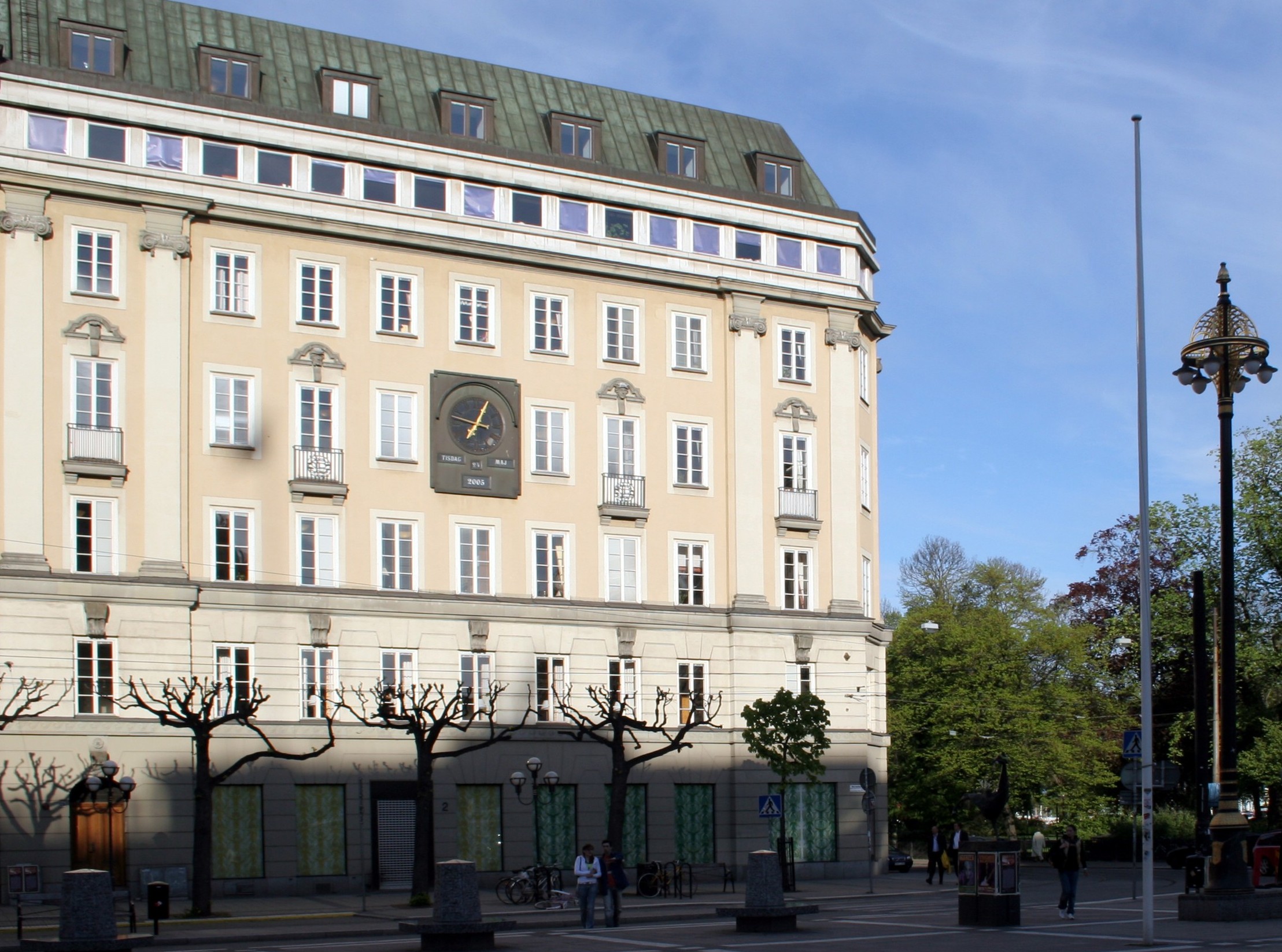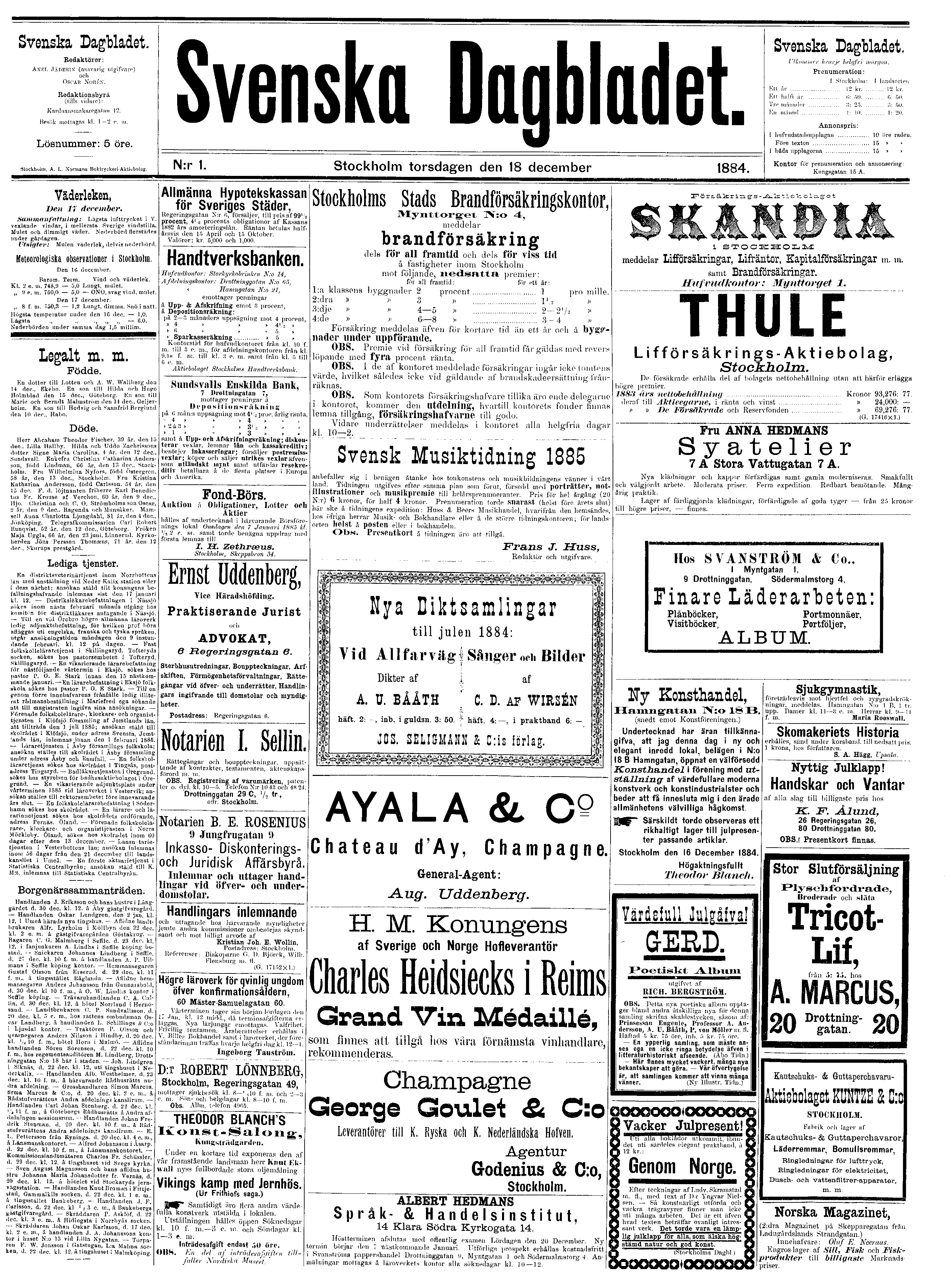|
Bullerby Syndrome
Bullerby Syndrome (german: Bullerbü-Syndrom) is a term referring to an idealization of Sweden, which may occur in German-speaking Europe. It consists of a stereotypical image of Sweden usually with positive associations, including wooden houses, clear lakes, green forests, elk, people with blond hair, happy people and midsummer sunshine. The term comes from Astrid Lindgren's ''The Six Bullerby Children'' books, set in rural Sweden. Berthold Franke at the Goethe-Institut in Stockholm, Sweden, wrote articles about the phenomenon, published in ''Svenska Dagbladet''. He stated that it was originally a view of Sweden, but now also the wish for a better Germany. According to him, Sweden symbolizes a healthy society and nature untouched by mankind. In February 2008, the term was named "word of the month" by the Swedish Language Council. [...More Info...] [...Related Items...] OR: [Wikipedia] [Google] [Baidu] |
Sydsvenskan
''Sydsvenska Dagbladet Snällposten'', generally known simply as ''Sydsvenskan'' (, ''The South Swedish''), is a daily newspaper published in Scania in Sweden. History and profile ''Sydsvenskan'' was founded in 1870. In 1871 the paper merged with ''Snällposten'' which was started in 1848. ''Sydsvenskan'' is headquartered in Malmö and mostly distributed in southern Scania. Its coverage is characterized by local news from southwest Scania in addition to a full coverage of national, EU, and international news. The paper is owned by the Bonnier Group which bought it in 1994. It was one of the Swedish publications which featured news materials provided by the Swedish Intelligence Agency during World War II. Until 1966, ''Sydsvenskan'' had close ties to the Rightist Party (now Moderate Party). In the Swedish debate about the country's role in the EU and in relation to the Eurozone, the paper has emphasized the importance of a closer political, economical, and cultural affiliat ... [...More Info...] [...Related Items...] OR: [Wikipedia] [Google] [Baidu] |
Swedish Culture
The Culture of Sweden has long been known for the accomplishments of a wide variety of artists. Prehistoric Sweden was the source of Norse culture, dominant in all of Scandinavia for hundreds of years, and the Temple at Uppsala in Sweden was a site of pilgrimage for Scandinavian peoples take the Aesir. Western culture mostly recalls Vikings of Norway and Denmark for invading France, England, Scotland and Ireland, but Swedish Vikings influenced Byzantine culture, where they were known as Varangians, and are also known for founding the Kievan state. Of the country's many monarchs, a few of the more powerful ones, such as King Gustav III and Queen Christina, have been exceptionally important to its cultural development. In modern times, many Swedes have been internationally celebrated for their cultural work, among them Jenny Lind, PewDiePie, August Strindberg, Ingrid Bergman, Ingmar Bergman and ABBA. Automotive designs such as those of Volvo and Saab have also been wide ... [...More Info...] [...Related Items...] OR: [Wikipedia] [Google] [Baidu] |
Germany–Sweden Relations
The relation between Germany and Sweden has a long historical background. The relationship is characterized by exchanges between the neighboring countries of the Baltic Sea in the 14th century. Both countries are members of the European Union, NATO, the United Nations, the OSCE, the Council of the Baltic Sea States and the Council of Europe. Germany has given full support to Sweden's membership of the European Union. Germany strongly supported Sweden's NATO membership during the latter's accession process. Germany currently has an embassy in Stockholm. Honorary consuls are in Åmotfors, Göteborg, Jönköping, Kalmar, Luleå, Malmö, Sälen, Uddevalla, Visby. The Swedish embassy in Germany is in Berlin. Honorary consuls are in Bremen, Düsseldorf, Erfurt, Frankfurt am Main, Hamburg, Hannover, Kiel, Leipzig, Lübeck, München, Rostock and Stuttgart. About 50,000 Swedes live in Germany , and about 20,000 Germans live in Sweden History During the First World War (1914–1918), t ... [...More Info...] [...Related Items...] OR: [Wikipedia] [Google] [Baidu] |
German Culture
The culture of Germany has been shaped by major intellectual and popular currents in Europe, both religious and secular. Historically, Germany has been called ''Das Land der Dichter und Denker'' (the country of poets and thinkers). German culture originated with the Germanic tribes, the earliest evidence of Germanic culture dates to the Jastorf culture in Northern Germany and Denmark. Contact with Germanic tribes were described by various Greco-Roman authors. The first extensive writing done on Germanic culture can be seen during the Roman Imperial Period with ''Germania'' by Tacitus. History German culture has been the pinnacle of Europe for thousands of years. Germany has been the center for various important phenomena such as the Migration Period, the Carolingian Empire, Holy Roman Empire, the Medieval renaissances, Scholasticism, the Hanseatic League, the German Renaissance, the The Printing Revolution, Printing Revolution, Protestant reformation, Prussia, Romanticism, Ger ... [...More Info...] [...Related Items...] OR: [Wikipedia] [Google] [Baidu] |
Stockholm Syndrome
Stockholm syndrome is a condition in which hostages develop a psychological bond with their captors. It is supposed to result from a rather specific set of circumstances, namely the power imbalances contained in hostage-taking, kidnapping, and abusive relationships. Therefore, it is difficult to find a large number of people who experience Stockholm syndrome to conduct studies with any sort of power. This makes it hard to determine trends in the development and effects of the condition— and, in fact, it is a "contested illness" due to doubts about the legitimacy of the condition. Emotional bonds may be formed between captors and captives, during intimate time together, but these are generally considered irrational in light of the danger or risk endured by the victims. Stockholm syndrome has never been included in the '' Diagnostic and Statistical Manual of Mental Disorders'' or DSM, the standard tool for diagnosis of psychiatric illnesses and disorders in the US, mainly due ... [...More Info...] [...Related Items...] OR: [Wikipedia] [Google] [Baidu] |
Suecophile
A Suecophile is someone with a great interest in the Swedish culture and the Swedish language. The term is most often used when this interest is held by a non-Swede. An individual like this is also sometimes referred to as a ″Sweaboo″. In the language debate in Finland in the 19th and 20th centuries, the Svecoman movement was the name for those who preferred the Swedish language to the Finnish language. The word Suecophile is however more used in non-political circumstances. A well-known American Suecophile of the 19th century was William Widgery Thomas, Jr., who was US minister Minister may refer to: * Minister (Christianity), a Christian cleric ** Minister (Catholic Church) * Minister (government), a member of government who heads a ministry (government department) ** Minister without portfolio, a member of government w ... to Sweden and wrote the book ''Sweden and the Swedes'' in 1892, de facto promoting a better understanding and acting towards Swedish immigrants to ... [...More Info...] [...Related Items...] OR: [Wikipedia] [Google] [Baidu] |
Sweden Hills
is a Swedish-style village in Tōbetsu, Hokkaidō in Japan. The style of the houses are Falu red wooden houses. A Swedish ambassador visited the nearby town center of Tobetsu and thought that the climate was quite similar to the Swedish climate. Construction of the village started in 1984. The Swedish holiday of the Midsummer festival is one of the traditions that’s celebrated annually in the town, for this the residents dress up and wear traditional Swedish clothes. There is also a Swedish "Kräftskiva" (crayfish party A crayfish party is a traditional summertime eating and drinking celebration in the Nordic countries. The tradition originated in Sweden, where a crayfish party is called a '. The tradition has also spread to Finland via its Swedish-speaking ...) in August. A golf club, Sweden Hills Golf Club, is nearby. See also * Bullerby Syndrome * Suecophile References External linksSweden Hills(Japanese)Midsummer in Sweden Hills (Swedish) [...More Info...] [...Related Items...] OR: [Wikipedia] [Google] [Baidu] |
Swedish Language Council
The Language Council of Sweden ( sv, Språkrådet) is the primary regulatory body for the advancement and cultivation of the Swedish language. The council is a department of the Swedish government's Institute for Language and Folklore ( sv, Institutet för språk och folkminnen). The council asserts control over the language through the publication of various books with recommendations in spelling and grammar as well as books on linguistics intended for a general audience, the sales of which are used to fund its operation. The council also works with four of the five official minority languages in Sweden: Finnish, Meänkieli, Yiddish, and Romani (Sámi excluded) alongside the Swedish Sign Language. Between 1965 and 2007, the council published the quarterly journal ''Språkvård'' (lit. "Language care"). The journal published articles about the use and development of the Swedish language, Q&As about spelling and grammar as well as guidelines for the use of Swedish in various co ... [...More Info...] [...Related Items...] OR: [Wikipedia] [Google] [Baidu] |
SR International – Radio Sweden
Radio Sweden ( sv, Sveriges Radio International) is Sweden's official international broadcasting station. It is a non-commercial and politically independent public service broadcasting company. History SR International is part of Sveriges Radio (SR), Sweden's non-commercial public-radio broadcasting organization. The service was founded in 1938, at the approach of World War II, as a way of keeping Swedes living abroad informed of happenings in Sweden and of Swedish opinion. Programming was at first in Swedish only, but in 1939 English- and German-language broadcasts were added. After the war, further language services were added: in French, Portuguese, Russian, and Spanish. At the close of the Cold War, the services in French, Portuguese, and Spanish were gradually phased out and replaced by new services in Estonian and Latvian. The latter services were withdrawn once Estonia and Latvia had developed their own independent media and joined the European Union. Radio Swed ... [...More Info...] [...Related Items...] OR: [Wikipedia] [Google] [Baidu] |
Svenska Dagbladet
''Svenska Dagbladet'' (, "The Swedish Daily News"), abbreviated SvD, is a daily newspaper published in Stockholm, Sweden. History and profile The first issue of ''Svenska Dagbladet'' appeared on 18 December 1884. During the beginning of the 1900s the paper was one of the right-wing publications in Stockholm. Ivar Anderson is among its former editors-in-chief who assumed the post in 1940. The same year ''Svenska Dagbladet'' was sold by Trygger family to the Enterprise Fund which had been established by fourteen Swedish businessmen to secure the ownership of the paper. The paper is published in Stockholm and provides coverage of national and international news as well as local coverage of the Greater Stockholm region. Its subscribers are concentrated in the capital, but it is distributed in most of Sweden. The paper was one of the critics of the Prime Minister Olof Palme, and in December 1984 it asked him to resign from the office following his interview published in '' ... [...More Info...] [...Related Items...] OR: [Wikipedia] [Google] [Baidu] |






